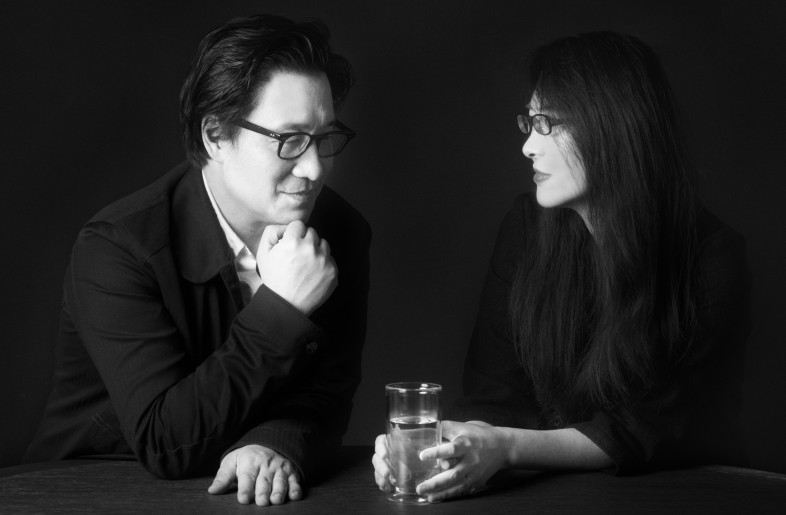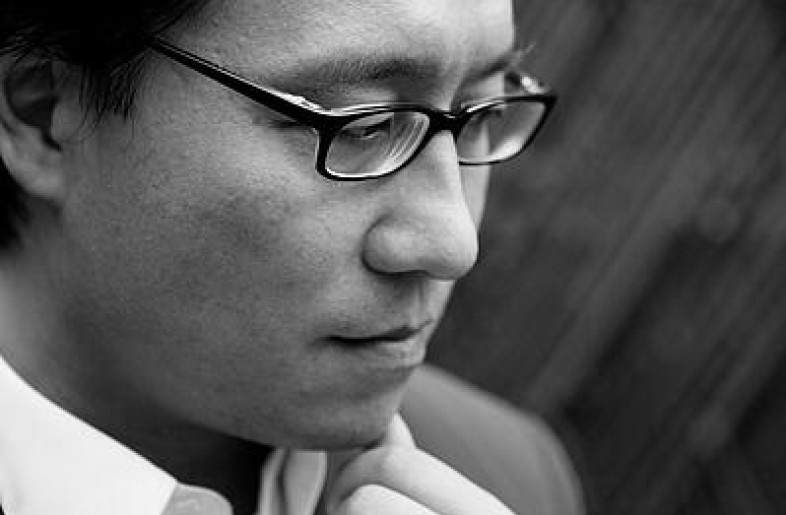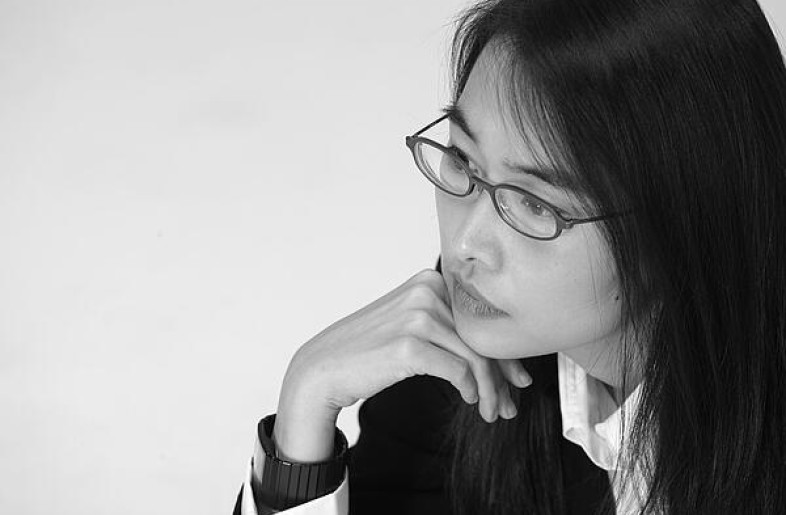They may be only mid-career, but Neri&Hu have nabbed the top Honorary Award at this year’s Frame Awards. Here’s why. ‘Consider it an encouragement,’ said Frame editor in chief Robert Thiemann when sharing the news of the accolade with Lyndon Neri and Rosanna Hu, ‘to continue the path that you’re on.’ In the 14 years since becoming acquainted with the studio, we’ve seen its impressive designs only grow in scale, variety and cultural relevance.
As Hu noted, from their first international media exposure to their first Lifetime Achievement Award: Neri&Hu has come full circle with Frame. Here they tell Thiemann about the journey so far, the contemporary creative climate, and their hopes for their careers to come. In an interview you did with us a couple of years ago, you said that when you set up shop in 2004, ‘what was important to us was to have a sense of identity as Chinese creatives . . . We started with a passion for showing that Chinese creativity exists.’
There’s currently a boom of Chinese creativity. What do you consider to be its identity? And how did you play a role in that?
LYNDON NERI: When we came to China, relatively young, there were a lot of things that were quite alarming. Things were being demolished at an unprecedented rate. We were appalled at the attitude behind preservation and demolition, let alone sustainability. And we encountered many clients that couldn’t have cared less about copying products or images from magazines. It was never about authenticity or trying to find themselves. The key was being commercially viable, at a speed that we were not used to.
What really opened our eyes was going to Milan. I still vividly remember brands refusing to let us enter their booths. We had cameras, so their first thought was you’re just going to copy us. Rossana and I felt it was very wrong, but we also understood the sentiment, the fear. As diasporic Chinese, we arguably take Chinese tradition even more seriously because there’s an added need to preserve our identity. Is it a particular style? Visual cue? That’s not what we’re interested in because that’s rather superficial. We’re trying to understand the essence. With this kind of conviction, we try to find meaning and purpose in what we do within the context we are practising.
We can’t represent the entire country – something up north is different from the middle, like here in Shanghai, and from down south. East and west have differences too. We didn’t intend to be interdisciplinary. But we were asked to do architecture and interiors. And then there were a lack of good product designers and most of them were making knockoffs, so we decided to venture into that as well. Then graphics, branding and eventually teaching. Some call Neri&Hu an institution or a movement, but we’re not that visionary. It was more of a necessity.
What do you consider to be your milestone project in that whole journey?
LN: There are many. A lot of people consider our teacup, a play on ZiSha or purple clay, to be Chinese in aesthetic. It takes a particular Chinese material and abstracts it to a point where it’s so simple, taking away all the decoration often associated with Chinese teacups and teapots. The Waterhouse, obviously, whose preservation brought us an international appeal. But even before that we designed a Design Republic store on the Bund that made people go ‘whoa, this is interesting’. Retail that’s anti-retail. Retail that does not have a window, only a door. Retail that reverses the notion of public and private. Lately a number of other projects have started to capture the attention of the architectural world, like our Tsingpu Yangzhou Retreat.
And we’re now working on a wine distillery for European brand Pernod Ricard, which should open in about a month. That should be quite interesting to see. The Relic Shelter, a teahouse designed by Neri&Hu in Fuzhou, reuses the remains of a Qing dynasty official's residence. Many designers are still very concerned with beauty. In recent years we’ve seen developments like Black Lives Matter and the Corona crisis, as well as all kinds of natural phenomena related to climate change. And now topics like human-centricity, inclusivity and sustainability are gaining interest.
I’m sure you’re still aiming for aesthetic projects, but how do you see your work relating to these global issues?
ROSSANA HU: I don’t feel that the topics you mentioned depart from the question of beauty. You said ‘aesthetics’, and that's probably a better word to use, because beauty is so difficult to define these days. With beauty there’s good and bad, right? Beautiful and ugly. But aesthetics speaks of a certain judgment and standard. And I think our societies have now moved towards embracing those ideals into the standard of aesthetics. Aesthetics is a dimension of philosophy. It’s about human beings questioning the meaning of life. Beauty used to be equivalent to nature – the closest representations of nature become beautiful. But that’s not how it is now. So, how do we judge beauty? I think we’re always looking for those standards. And I think that standard today is how well we serve the society, how inclusive we can become.
How do you see the future of spatial design developing?
RH: We’re already seeing a lot of signs that point to a blurring of disciplines. You almost don’t need schooling to do what you want to do, and people are often practising something they didn’t go to school for. Blurring in the creative disciplines – painters designing spaces, product designers designing buildings, artists designing fashion, filmmakers designing shoes – will also bring in a more interdisciplinary way of working. And digital platforms allow different people to be connected in unprecedented ways. I think they will lead us to a very different way of engaging work.
LN: I also think that the digital aspect of design is constantly trying to take humanity out of physical space. Retail, shopping, schooling. Now it’s suddenly okay for families to not get together as long as they can Zoom. When you’re not physically together, there’s no need to have a nice physical space. It’s getting even more dangerous that we can use the digital world to fabricate notions of space that are perhaps not real or authentic. Maybe I’m old school – after all, this is a Lifetime Achievement Award – but I might as well go to the grave fighting for space and the dignity of space. Otherwise pretty soon, architecture and interior design will be obsolete.
RH: That’s not true. I agree that the future is moving away from physical space. But I think architects and designers in the digital era ought to be well versed in the cyberspace, because they’re going to be designing spaces they’ve never been to and that maybe no one can get to. But hopefully architects and designers will play a very important role in the design of these metaverses.
LN: I completely agree. But what I’m trying to say is that there is three dimensionality in two dimensions. It can’t purely be flatness for the sake of flatness. Otherwise, we’ll just have graphic designers.
RN: Yes, but I think the digital age is going to bring us into not just three dimensions, but four and five, where time will be manipulated. A project for the 2019 Stockholm Furniture & Light Fair, The Unfolding Village focused on China's disappearing villages and village culture.
What would you like to have achieved by the end of your career?
LN: We started practising late, so we came out running. We decided we have to start ‘ending’ our careers earlier, so we started teaching. We also started archiving – not so much just our work, but the time and the generation in which we are working. We’re trying to get the artists, architects, graphic designers, product designers and interior designers of our generation to start archiving some of the people that have influenced us, and some of the work we have produced during this particular period of Chinese creative renaissance. We want it to be a platform for discourse in the future. We started teaching – also abroad, at Yale and Harvard – to educate the next generation. Not about what we like and don’t like, but a way of thinking, of being rigorous, of having critical discourse. Hopefully this generation will care and have the intensity and initiative to bring about change when it’s needed. Last but not least: collaboration. We’ve started to think about the possibilities outside of architecture – sustainability, real estate, social living, new ways of working and travelling – and to find other brands and disciplines to work with us to find solutions.





___cover_1124_750-thumb.jpg)







